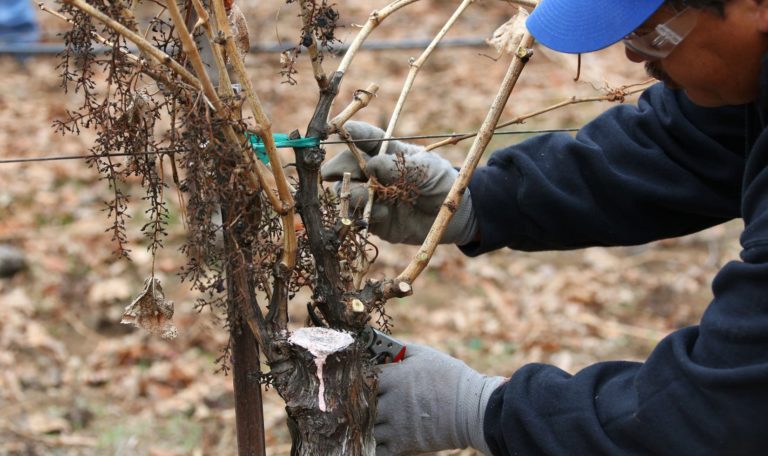Winter. It’s the season for rejuvenation, not just for people but for plants as well. In wine country, winter is the time when vineyards sleep and recharge, waiting for the long, cold nights to get shorter and shorter. And the sun to rise earlier and earlier–a sign that spring is near. All winter long, it’s a race against Mother Nature’s clock to finish one of the most important steps if vineyard farming–grapevine pruning. When and how to prune grapevines can affect the quantity of the grapes and ultimately the quality of the wine. Just like winemaking, grapevine pruning is both a science and an art. In this educational video, fifth-generation Alexander Valley farmer Bret Munselle, one of Jordan’s key grapegrowers, discusses how to prune grapevines during the winter and the challenges that arise with grapevine pruning.
Grapevine pruning is the longest and most laborious task winegrowers endure in the vineyards each year. Vines go into winter dormancy in November or December–losing the last of their leaves and leaving only bare cane shoots in their canopies–which is the ideal time for the vines to be pruned of their old wood. Vineyard teams spent up to four months of the winter season hand-cutting the vine’s canes from the previous growing season with the goal of leaving the precise number of buds to create a balanced crop once the grapevine awakens from its winter dormancy, and the dormant buds push. We call the growth of new buds “bud break,” and it usually occurs right around the beginning of spring.


